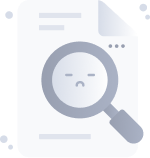
- Overview
- Curriculum
- Discussion
- Review
- Instructor
-
Create a Whole Database From Scratch by Coding SQL
-
Dive into PostgreSQL Database Management System
-
Practice through Coding Exercises, Practice Texts and Assignments
-
Pure SQL Coding through Windows Command Prompt
-
Master The Fundamentals of Databases
-
Learn How To Create Users and Grant or Revoke Privileges
-
Gain an Emersive Understand of Manipulating Data in a Database using SQL
-
Learn how to insert, update, remove and retrieve data using SQL
-
Learn how to join data together from more than one table.
-
How to group data together and apply statistical computations
-
There are no requirements for this course. Your interest in the topic and your commitment to learning are all you need to achieve the utmost benefit from this course.
-
Anyone who wants to learn about databases and how to communicate with them.
Why should you enroll in this course?
This course is made to be concise and to the point, To up your skills and waste no time (No fillers, etc)
Perfectly covers the fundamentals of Databases and the basic topics of SQL up to the intermediate topics in SQL and PostgreSQL.
It's beginner user-friendly, Starting with those who have no clue about SQL to up their skill level from Beginner to Intermediate.
Comprehensive and easy-to-understand tech content.
It covers all business categories therefore, No matter what industry you're working in/want to work in, This course is for you.
On-Video and Off-Video practice tests, Coding Exercises, and Downloadable Resources to help you learn and practice simultaneously.
This course is all about coding, We will not use any software where you click on buttons to create a database, We will code only step-by-step
All your queries and questions will be answered by the instructor directly.
Finally, This course is updated regularly to match the latest PostgreSQL updates, Hence, You won't have to take another path.
What will you learn in this course?
Learn what's a database and what are database management systems available.
What are a Relational Database and A Non-Relational database?
What's SQL?
What are constraints and data types in SQL?
How to code SQL to create a database, Tables, and Users?
How to insert data into a database/table through coding SQL?
How to code SQL to update the structure of a database and tables?
How to remove a database, tables, and Users?
How to grant and revoke privileges from a User?
How to manipulate data in a database using SQL?
How to sort and group data in a database using SQL?
How to join more than one table together?
Practice SQL along the way through Quizzes, Practice Tests, and Coding Exercises.
What makes this course different from the other courses?
This course targets beginners and ups their skills to intermediate.
It validates your progress through on-video practice tests, Off-video practice tests, and Coding Exercises.
It offers auto-generated subtitles in more than 3 languages including (Arabic, Hindi, and Spanish)
Less than 8 hours avg response time (By the instructor)
Regularly updated downloadable resources.
What our students say about this course:
I started from nothing in SQL to a great level now because of this course, What truly made the difference was the easy to digest content, practice tests and coding exercises, totally recommended.
Exceptional, The coding exercises made the material easy to memorize and the overall experience is exceptional.
This course was short but very informative and rich with content and practices.
Why PostgreSQL and not MySQL?
PostgreSQL and MySQL are the two top open-source relational database management systems, Despite them being similar yet there are a number of differences, Some of them are:
PostgreSQL has more data types than MySQL, which is great for database optimization.
PostgreSQL performs better than MySQL in terms of the high volume of reads and writes applications.
PostgreSQL has multiple encrypted security-related connection options in comparison with a lower number to MySQL.
In conclusion, The ultimate decision relies on a personal choice despite the fact that PostgreSQL has more benefits.
Finally, By the end of this course, You will confidently be able to execute SQL codes to create and control a database, Insert, Delete, Update and Manipulate data in a database, Create, remove and control privileges of users in a database, and finally grouping, joining data from multiple tables and apply statistical operations on data.
Take the leap and enroll with us today. We can't wait to play a vital role in your journey to success.
Course Introduction
Course Introduction
Introduction to Database
Introduction to Database
Relational VS Non-Relational Databases
Relational VS Non-Relational Databases
Relational Database Management Systems (RDBMS)
Relational Database Management Systems (RDBMS)
Introduction to SQL
Introduction to SQL
Important Note
Important Note
PostgreSQL Download and Installation
PostgreSQL Download and Installation
How to Initiate PostgreSQL in Command Prompt
How to Initiate PostgreSQL in Command Prompt
Ubuntu Download and Installation (Optional)
Ubuntu Download and Installation (Optional)
PostgreSQL Package in Ubuntu (Optional)
PostgreSQL Package in Ubuntu (Optional)
CREATE DATABASE
CREATE DATABASE
CREATE TABLE
CREATE TABLE
CREATE USER
CREATE USER
SQL Constraints
SQL Constraints
Data Types in PostgreSQL
Data Types in PostgreSQL
DDL Practice Test
DDL Practice Test
Practice Test 1
Practice Test 1

No Discussion Found
4.6
51 Reviews
Moustafa Ahmed Abd El-Azim
Instructor
Blink Data
Instructor
This Course Includes









